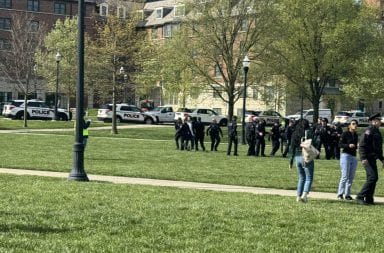Establishing a 36-hour window for landlords to respond to student-renter complaints was one aspect presented in the Undergraduate Student Government’s Off-Campus Task Force 2013 Report after getting input from students and community stakeholders.
Other findings in the report, which has not been officially released to the public, showed that the “danger” area most often identified off campus was Fourth Street.
The average housing quality rating was a 6.7 out of 10, and the average monthly rent per student was $505.78.
The report was released more than a month after than the initially expected Feb. 1 deadline and focused on areas of excellence, including building and maintaining community, facilitating and enhancing partnerships and improving housing infrastructure.
Within each area of excellence, “student development goals” were recommended to improve the community. Some suggestions included achieving a 36-hour response rate with landlords for students having housing problems, since the report showed 21 percent of students said landlords didn’t respond to maintenance requests within that time frame.
“We are the connections between the landlords and the university, so because we’re kind of in the middle of all of this, we can be the group that begins to foster this collaboration,” said USG President and third-year in public affairs Taylor Stepp. “We believe that we can be the group that brings people to the table and says, ‘How do we fix this problem?'”
USG sought student input while compiling data for the report, but Stepp said task force emails went out to about 5,000 students and were only met with a 17 percent response rate.
Other student development goals in the report included introducing energy-efficient appliances in houses, installing energy meters for student use and increasing City of Columbus code inspections for improving home add-on efficiency.
The report also suggests working with Columbus to repair sidewalks and roads, expanding the city recycling program and reducing litter in the off-campus area.
Task-force leader and former USG President Nick Messenger said the report’s greatest strength is that it used input from landlords, students and parents to help achieve a better community.
“The biggest takeaway from the report in my opinion is that you can’t create an off-campus community that will actually be any better for students until you get all of the stakeholders to start addressing problems as a team,” Messenger said. “You can’t move something this big by just blaming or demanding action from one piece of the puzzle.”
The task force also suggested ways to build and maintain a community by creating an off-campus commons space that will also improve student safety.
“What we also found was that students become much more reliant on being on campus for that sense of community and being social,” Messenger said. “That creates safety problems too because when students are relying on (the William Oxley Thompson Memorial) Library until midnight or the SEL (18th Avenue Library) until 2 or 3 in the morning, walking home to an off-campus apartment far away becomes a safety hazard.”
The report, which was passed by the USG Senate at its Wednesday meeting, will be sent out to university administrators and so-called stakeholders for review, Stepp said. The report could take up to a week to be officially released.


